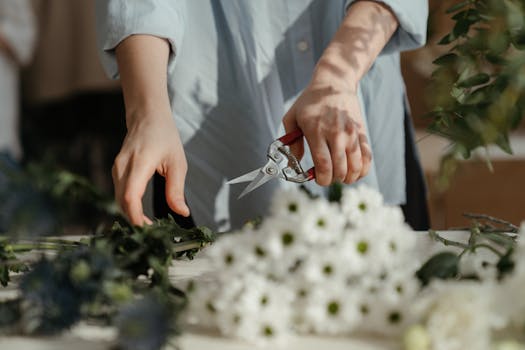Useful Tips for Trimming Your Split Ends Yourself at Home with Professional Hair Scissors
Split ends are a common hair issue that can make your locks look unhealthy and frizzy. While regular trips to the salon are ideal for maintaining hair health, many people prefer to save time and money by trimming their split ends at home. With the right tools and techniques, you can achieve salon-quality results without leaving your house. This article provides useful tips for trimming your split ends yourself using professional hair scissors.
Understanding Split Ends
Before diving into the trimming process, it’s essential to understand what split ends are. Split ends occur when the protective outer layer of the hair cuticle wears away, leading to fraying at the ends. Factors contributing to split ends include:
- Excessive heat styling
- Chemical treatments (dyeing, perming)
- Environmental damage (sun exposure, pollution)
- Lack of moisture and hydration
According to a study by the American Academy of Dermatology, nearly 60% of women experience split ends, making it a widespread concern. Understanding the causes can help you prevent future damage while you trim your hair.
Choosing the Right Tools
Using the right tools is crucial for a successful at-home trim. Here’s what you need:
- Professional Hair Scissors: Invest in high-quality hair scissors designed specifically for cutting hair. Avoid using regular household scissors, as they can cause more damage.
- Comb: A fine-toothed comb helps detangle your hair and makes it easier to identify split ends.
- Hair Clips: Use clips to section your hair, allowing for a more organized trimming process.
- Mirror: A good mirror setup is essential for visibility. Consider using a handheld mirror in conjunction with a wall mirror.
Preparing Your Hair for Trimming
Preparation is key to achieving a clean trim. Follow these steps to prepare your hair:
- Wash and Dry: Start with clean, dry hair. Washing removes product buildup, making it easier to see split ends.
- Detangle: Use a comb to gently detangle your hair, ensuring there are no knots that could complicate the trimming process.
- Section Your Hair: Divide your hair into manageable sections using clips. This will help you focus on one area at a time.
Trimming Techniques
Now that your hair is prepared, it’s time to trim those split ends. Here are some effective techniques:
- The Point Cut: Hold a section of hair vertically and use the scissors to cut into the ends at a slight angle. This technique creates a softer finish and reduces bluntness.
- The Dusting Method: This involves trimming only the very tips of your hair, which can help maintain length while removing split ends. Aim to cut off about 1/8 inch.
- Twist and Trim: Twist a section of hair and cut off the split ends that stick out. This method is effective for identifying damaged areas.
Post-Trimming Care
After trimming, it’s essential to care for your hair to prevent future split ends. Consider the following tips:
- Hydrate: Use a deep conditioning treatment or hair mask to restore moisture.
- Avoid Heat: Limit the use of heat styling tools for a few days post-trim to allow your hair to recover.
- Regular Maintenance: Schedule regular trims every 6-8 weeks to keep split ends at bay.
Conclusion
Trimming your split ends at home can be a rewarding experience when done correctly. By understanding the causes of split ends, choosing the right tools, preparing your hair, and employing effective trimming techniques, you can maintain healthy hair without frequent salon visits. Remember to care for your hair post-trim to prevent future damage. With these tips, you’ll be well on your way to achieving beautiful, healthy locks right from the comfort of your home.
